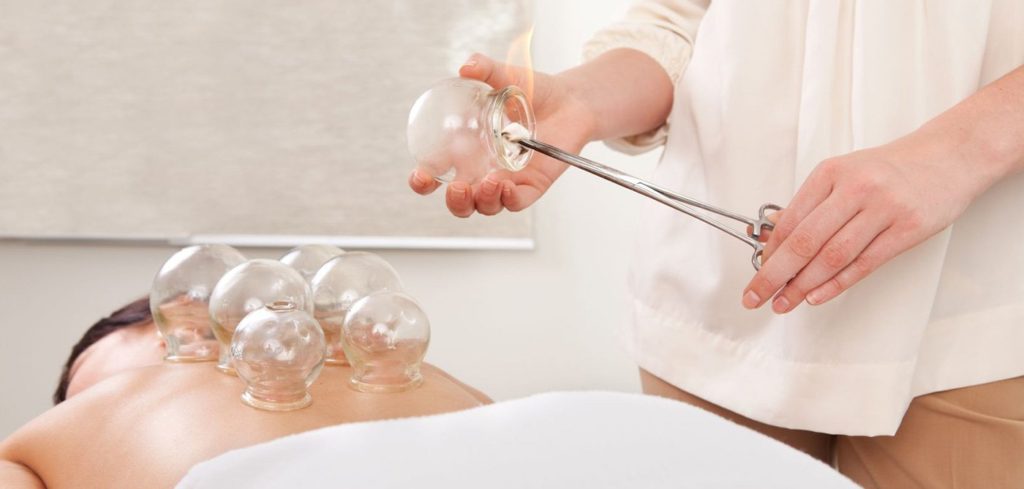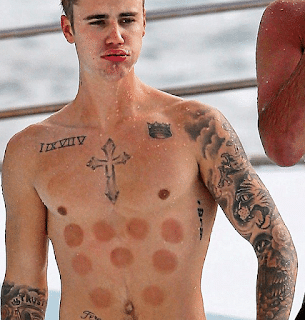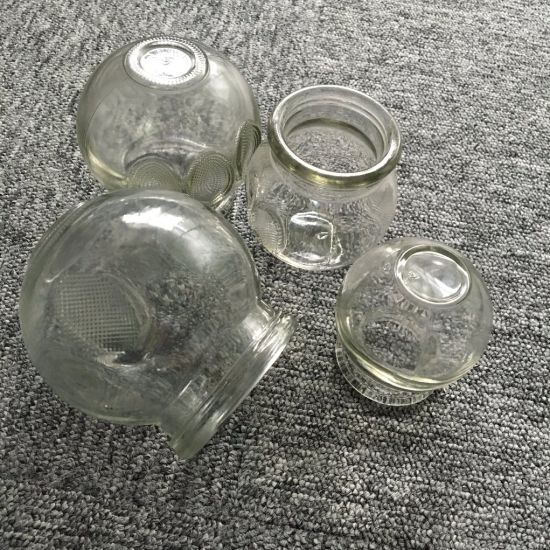
Cupping has been popularised in recent times by celebrities showing off distinctive circular marks on their torsos. Starting with Gwyneth Paltrow, it seems to have become a celebrity fashion accessory with the likes of Jennifer Aniston, Victoria Beckham and Justin Bieber following suit and deliberately showing these marks off in public. But what exactly are its health merits?
History of Cupping

It would be amiss of me not to give you a brief insight into the long history of cupping therapy, because it is easy for modern day medical experts to dismiss cupping therapy as just another celebrity fad.
The history of cupping goes way back into antiquity and was practiced by numerous cultures. Reports of cupping have been found in Chinese, Hindu and Egyptian scriptures. The cups and techniques may have changed but the effect has remained the same.
The father of medicine, Hippocrates (400 BC), was also familiar with cupping. Cupping was used right up to the 19th century in hospitals but fell out of favor with the advent of recently developed chemical drugs which was perceived to be the direction of where medicine was heading.
Cupping gradually began to die out in America and Europe in the early 20th century as physicians regarded cupping as ineffectual. The last bastions of cupping in the United States were in the immigrant sections of large cities. Cupping was relegated to barbers and they would advertise “Cups for Colds” in their windows.
Cupping is still practiced in Japan, China, Germany, Poland, Greece, Turkey, Brazil and many other countries and people in these countries, still keep a set of cups or jam jars in their first aid boxes.

What’s involved in Cupping?
Cupping is a therapy in which a jar is attached to the skin’s surface through creating a suction effect. This suction is achieved by introducing heat into the jar.
Traditionally, there are a variety of jars that can be used in cupping such as those made from bamboo, clay and glass. The glass cup is by far the most common used by practitioners today. The mouth of the cup is relatively smooth and small, but the body is large. The cup is transparent to allow the practitioner to observe and control the suction of the skin and the time it is left in place. Another type of cup available now is the mechanical suction cup, which operate via a mechanical pump without the need for heat to create the suction.
What to expect: Details of the Cupping procedure
• Cupping is performed on a patient’s bare skin, and because the cups need to be applied straight away, the practitioner will need to correctly position you depending on the presenting ailment prior to applying the cups
• A cotton ball is wrapped around forceps
• The cotton ball is soaked into methylated spirits and the excess is squeezed out
• The cotton wool is ignited, placed into the cup, and quickly withdrawn. The mild heat trapped in the cup creates the suction effect on the skin.
• The cup is then directly placed on intended area to be treated. This must be done quickly or else the necessary vacuum effect required for the cup to adhere to the skin will be inadequate.

Types of Cupping
• Mobile Cupping involves massage oil being applied to the area prior to applying the cup. The cup can then be moved along the skin easily to treat the affected area. The effect is much like a reverse massage, meaning the skin and muscles aren’t compressed but rather pulled into the cup causing increased blood flow which in turns helps to nourish and deliver oxygen to the tissues and encouraging the healing process with the therapeutic aim of removing congestion and pain. Initially it may feel a little strange but it may subsequently induce relaxation and a sense of calmness making it ideal for those that are stressed. This method of cupping usually doesn’t leave any visible marks on the skin.
• Fixed Cupping is used when a tight spot is encountered. The cups are applied directly to the site of pain or dysfunction and left there for 3-5mins. Fixed cupping may leave marks that look like perfectly round bruises but they are normal and should disappear within a couple of days. These marks are the source of fierce media discussion in the past, causing medical experts to share their opinion on this therapy from both sides.
What can Cupping treat?
Cupping therapy is based around the idea that suction from the cups draws the skin up and mobilises blood and energy around the body, encouraging the body’s natural healing process.
Usually used in conjunction with other treatments such as acupuncture, cupping can be effective for the treatment of:
• Musculoskeletal pain and discomfort
• Headaches and migraines
• Sporting injuries
• Asthma
• Chronic cough
• Gastro-intestinal disorders
The UK’s leading cupping practitioner is Dr Nish Joshi, a Harley Street holistic doctor who was held in high regard by the late Princess Diana.
Further to the above, his website recommends cupping ‘to aid the lymphatic flow, reduce fluid build-up, increase the blood circulation which will help give the skin a healthier appearance and reduce cellulite’.
Cupping precautions
Cupping is generally very safe to use and has no side effects. However, it is crucial for practitioners to inspect the skin first. Your practitioner could advise against cupping if they discover any of the following apply to you:
• Open wounds, dermatological problems or sunburn
• Recent trauma and inflammation
• Suffering from high fever
• Appears excessively famished or exhausted
Your practitioner will also be wary of the following during treatment:
• Avoid hirsute (hairy) areas
• Avoid bony protuberances
• During pregnancy, avoid cupping the abdomen and lumbar region
• Take care with patients that have bleeding disorders and are on anti-coagulant therapy
• Use with care in children and the elderly
Conclusion
Although there have been many heated and divided opinions about cupping in the press, the most scathing opinions have taken the extreme stance, warning that “fads” such as cupping can become dangerous if people start to use them in place of seeing their GP.
Cupping practitioners have never suggested that cupping is a miracle cure or that it should be used in isolation to cure ailments. To take a completely different (but perhaps more widely accepted) example, soft tissue massage is one element amongst various beneficial treatments that can help with relieving muscular pain, and is often used in conjunction with other treatments whether it be anti-inflammatory medications, exercises, or other. Cupping therapy has certainly endured the test of time, and in an individually tailored holistic health plan, I’ve personally concluded that myofascial cupping therapy is extremely effective in the treatment of musculoskeletal pain and injuries and can be a great contributor to the overall health and well-being of a patient.
